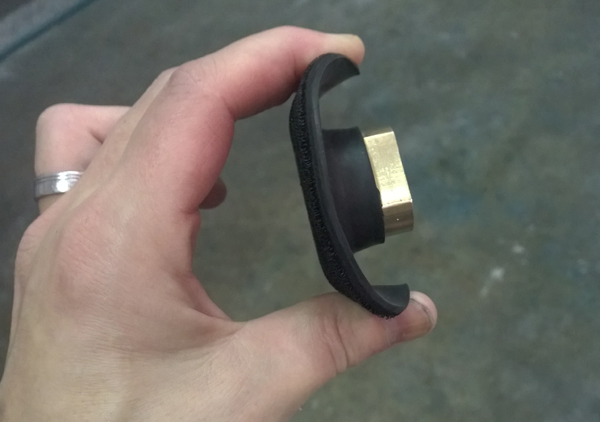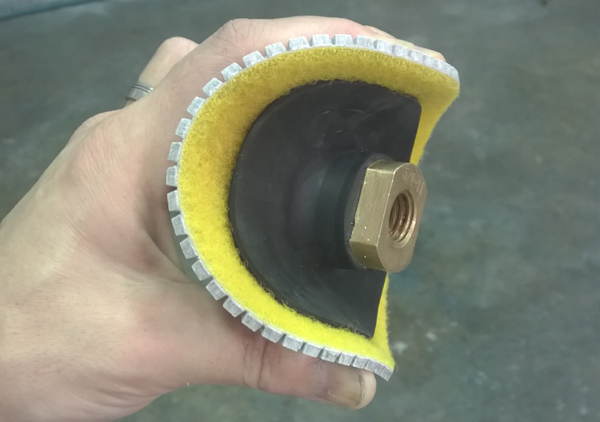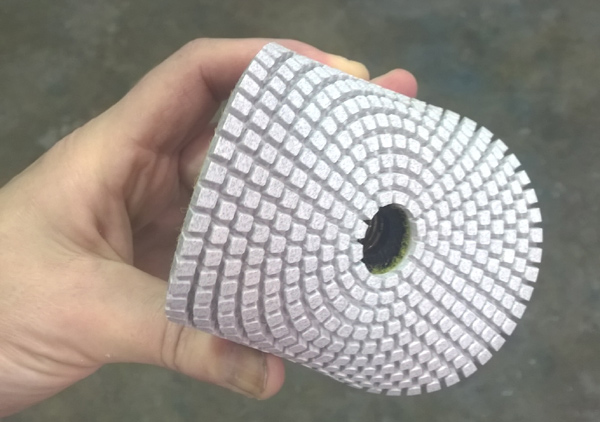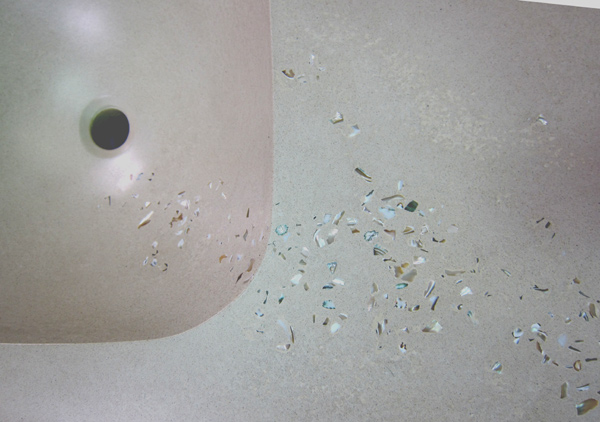Polishing flat surfaces is challenging enough. You must take care to keep the polisher flat and not gouge the concrete. What happens when you try to polish inside curves such as a sink?
Actually, polishing inside a sink is easy – if you have the right equipment. You can use the same polisher and the same 5″ diamond pads you usually use (assuming the diamond pads are flexible). The difference is in the backer.
The backer pads that come with a polisher when you purchase it are usually a hard rubber. They are supposedly flexible, but they are designed for granite, not concrete. They are too hard, and instead of flexing will just scallop the concrete.
In order to polish curved surfaces, such as inside sinks, you need a very flexible backer. By using a very flexible 4″ backer with 5″ diamond pads, you are able to polish tighter curves without risking gouging the concrete.
A thick foam 3″ backer does not flex uniformly. Where the larger pad meets the edge of the backer, there is a pressure point that gouges the concrete. A small, 3″ backer also tends to lose grip on 5″ pads.
You need a thin, very flexible 4″ backer that securely grips the polishing pad and allows it to flex more uniformly and produce a better quality surface.
Keep in mind that not all diamond pad are flexible enough to handle this. Make sure that your diamond pad will flex and not crack.
Here is a video that shows me using a flexible backer to polish inside a concrete sink:
In this video, I explain how to position the backer as you move along curves, to avoid gouging:
This backer makes it very easy to get a high quality finish and/or expose aggregate inside a sink.
Here’s the finished mother of pearl sink:
Pixie inspected and approved the sink:
Here is another integral sink vanity we made in class (shown wet):
Keep in mind, only sinks with smooth curves can be polished mechanically – not hard angles. It is possible to hand sand inside an angular sink with wet/dry sandpaper, but it’s nearly impossible to grind and polish to expose aggregate inside an angular sink.






